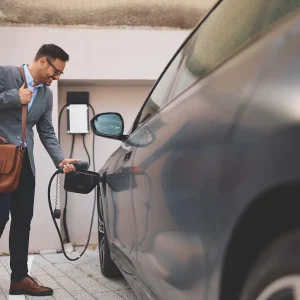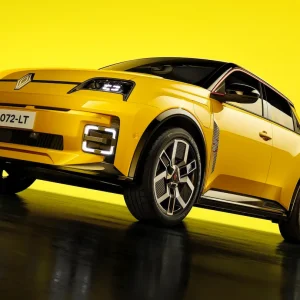Ask more or less anyone who knows what LPG (liquid petroleum gas) is and they’ll probably tell you it’s dead and buried or “that thing you used to get grants for”.
For those who’ve never heard of it, it’s a gas that turns to liquid when mildly pressurised. A straightforward procedure, including the addition of an extra tank, allows petrol-engined vehicles to adopt it as their primary fuel – but they can still revert to running on petrol if needs be.
The government did indeed operate a discount scheme, known as Powershift, between 1996 and 2005, whereby qualifying owners could claim up to 60% off the cost of converting a petrol vehicle to LPG on the premise of the fuel’s eco-friendly street cred, as it produces significantly lower emissions than petrol and diesel. The favourable zeitgeist also caused a number of manufacturers to begin selling LPG, or dual-fuel, vehicles out of the box in the UK.

When the grant dried up, demand went with it. The lack of government backing and the withdrawal of factory-converted models rendered it an instant dodo, even though the fuel itself has remained consistently cheap. Favourable tax rates due to LPG’s cleaner status mean it cost, on average, 64p a litre in the UK in the first quarter of 2018, according to GlobalPetrolPrices.com. In contrast, a litre of unleaded would typically set you back 123.9p a litre and diesel 126.7p a litre on 4 May 2018.
Frugal though it is, few in the fleet industry are convinced LPG has any life left in it. “I have seen no movement or push from the manufacturer side, converters or fuel stations,” says John Pryor, chairman of ACFO. “I am sure there are some who store it in bunkers and use it but, for the main core, this is not an option.”
Peter Eldridge, director at the Institute of Car Fleet Management (ICFM), is even more pessimistic. “The situation with LPG is that it has indeed died a natural death. In all honesty, I can’t think of anyone who would have anything useful to say about it,” he says.

It’s hardly a rosy outlook and, grant or not, there’s no skirting the issue of a conversion that typically costs £1,000-1,200, plus a day’s downtime to get it sorted. Couple that with availability limited to around 1,400 of the UK’s 8,500-odd filling stations, and it sounds like the final nail in the coffin.
Around £100,000 a year off your fuel bill somewhat tips the balance, though. That’s what Anglesey County Council’s fleet and driver manager, Gareth Owens, estimates he’s saving as a result of running 80 LPG vehicles, the majority of which are Citroen Berlingo and Peugeot Partner/Tepee vans and passenger car variants. The authority has LPG tanks on site, which are filled roughly once a fortnight and make for even cheaper fuel.
“The council’s policy is that, where we can, we run LPG vehicles, and there are two reasons,” says Owens. “There’s the environmental factor, because the emissions are a bit lower, but also the LPG is a lot cheaper than petrol. I think we pay in the region of 38 to 40p a litre at the moment, so there’s a significant saving there.”
The vehicles form part of a pool fleet and are used for anything from social work duties to highways, utilities and education services, and the council also specifies that vehicles are converted prior to delivery.

“We go out to tender and we specify a vehicle that’s already been converted to LPG,” adds Owens. “When we buy them, the vehicles go into the dealer and the dealer gets the conversion sorted before we receive them, so the warranty includes the LPG conversion, because the converter is a subcontractor to the main dealer. I think the conversion cost is about £1,000, but after 12 months you get that money back.”
Other than the occasional gripe that they feel sluggish – LPG is said to sap 10-15% of a petrol engine’s power output – and the odd fiddly fuelling issue, Owens claims to have had no more problems than you’d expect from an equivalent petrol or diesel vehicle, while the tanks are now compact enough to be housed in the spare wheel well, so there’s no loss of boot space. The fact that most of the vehicles return to the depot at the end of the day makes fuelling easier but, according to Owens, there’s little issue with those that do stay out overnight, as they simply return to base to top up – and you’ve always got the petrol engine as a back-up.

If Anglesey sounds like an exceptional case then consider the relatively recent example of Birmingham City Council, which received a £500,000 grant from the Office for Low Emission Vehicles’ Clean Air Fund in September 2014 to convert 65 of the city’s black cabs to LPG. Seeing as the fuel necessitates pairing with a petrol engine, the process involved removing the taxis’ existing diesel units and retrofitting entirely new, Euro 6 petrol engines, complete with dual-fuel system.
Given that Birmingham is one of five UK cities mandated to introduce a Clean Air Zone before the end of the decade, with more likely to follow, it’s a sage move for cabbies – who are also said to be enjoying lower fuel bills – as the vehicles now qualify to dodge the impending charge for older, dirtier models.
Authorities claim that independent tests have shown the taxis have each slashed nitrogen oxides by 80% and particulates by more than 90%, and the initiative was sufficient to bag the city the Local Authority and Public Sector Air Quality Initiative of the Year at the 2017 National Air Quality Awards.
It’s that pertinent issue where LPG has the chance to make a comeback, according to Holly Jago, general manager at UK LPG supplier Autogas. “The government’s been taken to court by Client Earth and lost three times, due to its air quality plan, and it needs solutions now,” she says. “Some of them are longer term – things like electricity, hydrogen and zero emission vehicles are absolutely the way that the market is going to go – but there are some major hurdles that need to be overcome before that sort of infrastructure can be deployed for the mass market, so we very much see LPG as a kind of bridging fuel. It’s a solution for today to bridge the gap to a zero-emission future.”
Jago claims the biggest obstacle to LPG take-up is the UK’s absence of factory-converted vehicles. Stick a few on sale, she says, and you’ll revive the market overnight. “I think it’s critical having an OEM get on board and back it to make sure that the warranties are in place. It would facilitate uptake far, far quicker and more easily,” she says. “Certainly, there are aftermarket conversions that take place at the moment and we know fleets that run their vehicles using those, but they are low in numbers, and I think the credibility and the reassurance that an OEM can bring, whether it is factory fit or whether it is an approved aftermarket conversion, would be beneficial.”
In a similar vein, consumer publication Autocar procured an LPG-powered Dacia Sandero Stepway from the Netherlands (the fuel is far more popular in Europe than the UK) for a six-month test, which ended in March 2018. It concluded that the car was far cheaper to run than a conventional equivalent, with minimal inconvenience, and there was a solid case for manufacturers to reignite factory-converted dual-fuel cars in the UK.
“The government’s been taken to court by Client Earth and lost three times, due to its air quality plan,and it needs solutions now.”
Though you’d expect the chief vendor of LPG to be positive about its application, Jago believes the infrastructure situation is quite workable for the majority of drivers. Yes, at a generous estimate, the fuel is only available at around 20% of the country’s filling stations, but the UK apparently has a greater density of LPG forecourts than the continent, and it can even be found at supermarkets. Realistically, those in some of the country’s extremities may struggle, but you can look for your nearest station on the Autogas website or via the
company’s app.
In truth, LPG isn’t practical enough to appeal to fleets en masse, but it wouldn’t take much to spark a revival. If a handful of manufacturers began offering out-of-the-box models, then half-price fuel and hugely lower emissions would sell themselves. It wouldn’t work for everyone, and those with dedicated facilities, such as Anglesey, would retain a distinct advantage, but the ability for any fleet to continue operating in cities, unruffled by the increasing clean air agenda, would be a big draw, to say the least.





